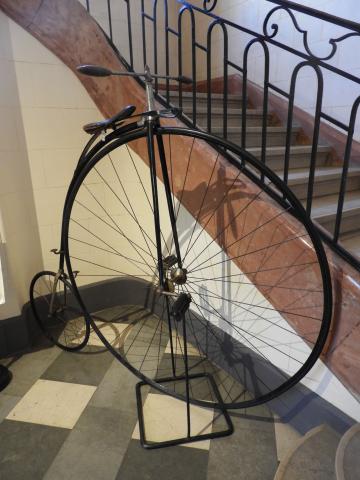The high-wheeler, also called a "velocipede," was a very popular type of bicycle in the late 19th century. It was distinguished by a particular feature: a much larger front wheel compared to the rear wheel. This design gave it a unique appearance and allowed it to reach speeds that were impressive for the time.
Why such an imbalance? The large front wheel allowed the bicycle to cover a greater distance with each pedal stroke, thereby increasing maximum speed. The saddle height, determined by the size of the front wheel, provided the rider with a more upright position, considered more comfortable at the time.
However, the high-wheeler quickly showed its limits:
- The large front wheel made the bicycle very unstable, especially at low speeds or on uneven terrain. Falls were frequent and often painful.
- Mounting a high-wheeler was a real challenge, requiring skill and practice.
- Its imposing size made it difficult to maneuver in narrow spaces.
The high-wheeler enjoyed rapid but short-lived success. By the end of the 19th century, it was gradually replaced by the safety bicycle, the ancestor of the modern bicycle. The latter, being more stable and easier to use, quickly won over the public.
- Unbranded bicycle
- Front wheel 1.35 m in diameter
- Angle-iron rims
- Two footrests
- No brakes


